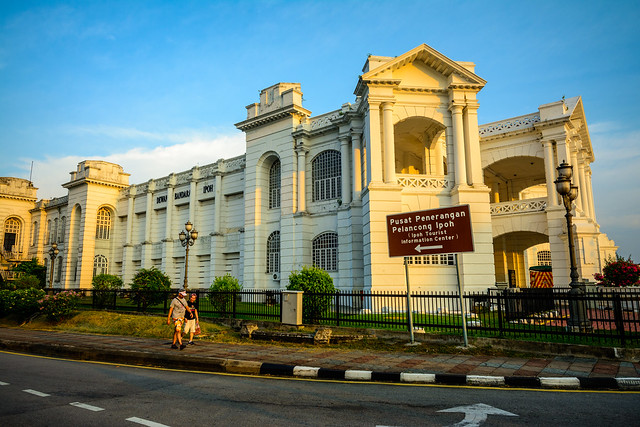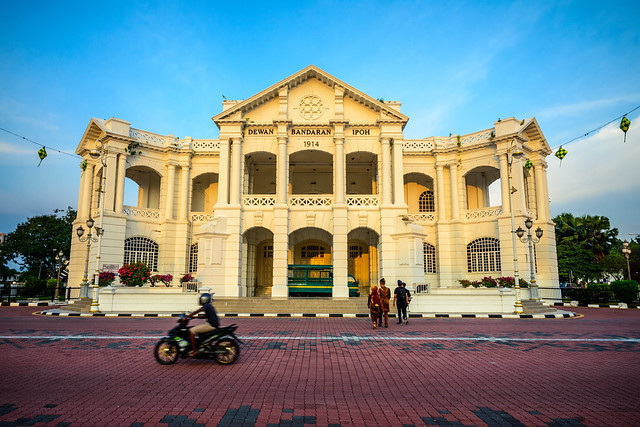Ipoh Town Hall & Post Office Building | A grand administrative edifice of yesteryear
 |
| Ipoh Town Hall & Post Office |
Ipoh started to grow exponentially when the Kinta Tin Rush began somewhere in 1884. Although the British Colonial Government did not confer even the capital of the district status to Ipoh and preferred to station its administrative centre of Kinta district in Batu Gajah, Ipoh was still developed entirely by the effort of the "private sectors" as it became the commercial centre of Kinta Valley. It was all due to its abundant stock of tin it possessed because Ipoh was situated at the heart of the richest tin mining district in the world - the fabulous Kinta Valley.
In 1911, the leading citizen of Ipoh expressed their indignation at the 'policy of neglect' towards Ipoh seemingly practised by the British Colonial Government despite Ipoh being the central town of Kinta Valley,. The indignation peaked when the vote for the rebuilding of the Ipoh railway station, considered the busiest in Malaya, was scrapped and as another insult, a request by Kinta Sanitary Board for a town hall was also rejected.
Ipoh watched in amazement as the Kuala Lumpur railway station was built to the grand standards of the British Raj, compared to the Ipoh railway station which was merely of a standard type 'scarcely worthy of a wayside station' while the only public building in Ipoh was 'a very makeshift wooden structure which had under its roof both a church and a bank.
However, over the next few years, Ipoh finally got what it demanded. Among the earliest prominent public buildings the British Colonial Government erected in Ipoh were its majestic railway station and the Town Hall & Post Office Building, both were completed in 1917 and designed by the same architect.
The Town Hall & Post Office building was designed by F.M.S Government Architect A.B Hubback F.R.I.B.A in 1913 while its Construction Supervisor was Federal P.W.D Assistant Architect W. S. Huxley & Architect Thomas Steele. The contract to construct the building was awarded to a local contractor, Towkay Lim Weng Ching. The Straits Times dated 22 July 1913 reported that as of 22 July 1913 the contractor had started its operations just after the contract was awarded..
The Malay Tribune dated 14 May 1914 entitled Ipoh's New Buildings reported as follows:
The Ipoh Railway Station and Hotel has been making very fair progress of late. The main roof is now being fixed up and one can gain a fair idea of what the building will be when it is finished.
Work is apparently about to be recommenced on the Town Hall and Post Office as several sheds of the type usually favoured by the local Chinese contracts have been erected, while bricks and cement have arrived.
 |
| Ipoh Town Hall & Post Office viewed from Station Road |
The Town Hall & Post Office building, as the name suggests, was built to accommodate a town hall consisting of a public theatre where the British elites and high-ranking officers socialised and came to watch plays, musicals and performances besides it was also occupied by state administrative offices. In the east section which was also the back portion of the building, it housed the Post Office whose entrance faced Post Office Road (now Jalan Dato' Sagor).
 |
| Ipoh Town Hall & Post Office |
 |
| Ipoh Town Hall & Post Office at dusk |
References:

Comments
Post a Comment